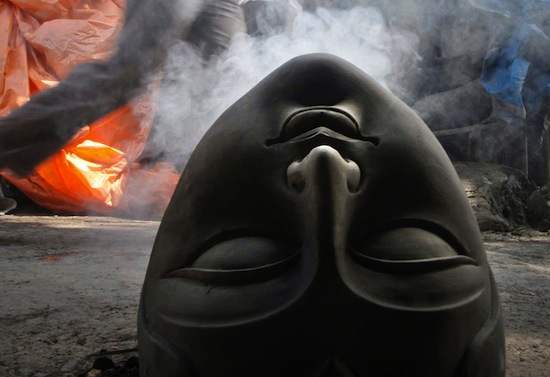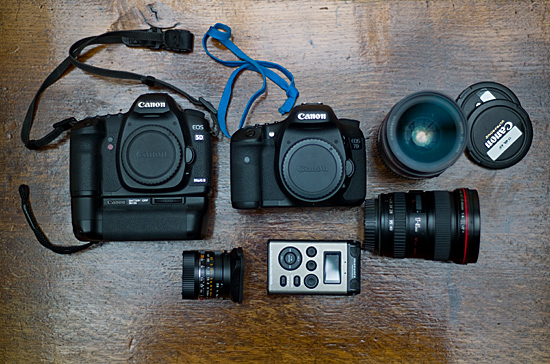Onam is around the corner, Mahabali the Kathapurushan, dear to all Malayalees is on his way to visit all of us. But is he really well known to us other than the brief story we have all heard since childhood? Not that I know of and everybody takes him for granted. So, I started on a trip to find out more and it certainly turned out to be an interesting trip. Starting with the mythical background of the story I went to Mahabalipuram, a place that carries his name but situated far away from Kerala. I then moved on to the Bana kingdoms of ancient times and finally circled back to Kerala through Tulunad checking out another link to the origin of Nairs. It was some trip and so let me take you to those locals, telling you the tale I learnt along the way. For all you know it may be a tall tale, but interesting anyway.
But first a bit about the origin of Naris – In my longish article that covered most of the usual stuff, I concluded thus - To summarize, the Nayars have been considered a derivative of local indigenous people with invading Aryans, have been wandering Scythins who settled down, the wandering Nagas and so on. No one theory holds forte, though from all the above, the Scythian link seems to be the near fetched one. At least that was what I felt then….
A preamble about Asuras
First we start with Aditi and Diti. Without getting into too many complications about their origins, Aditi’s children turned out to be the deavs or the godly sort and Diti’s through her lusty and untimely association with Kashyapa became the daityas or asuras. One such asura son Hiranyakashipu fathered Prahlada, who then fathered Virochana. Mahabali was born to Virochana and Viktare. Bana is Mahabali’s son and he fathers not one, but 4 crores of asuras named Nivatakavacas. So that in short establishes the lineage of Mahabali.
Mahabali
Now we have to figure out the connections between Mahabali and Kerala. Mahabali was as you know, a benevolent king of the asuras. Bali went on to succeed his grandfather as the king of the Asuras, and his reign over the realm was characterized by peace and prosperity. The churning of the oceans takes place, Mahabali takes possession of the urn of Amrut and a battle starts wherein Bali is first killed, but brought back to life by Sukracharya, after which an even fiercer battle takes place where Bali is victorious and drives out the Devas and Brahmanas. He would later expand his realm – bringing the entire world under his benevolent rule. Aditi his grand aunt is upset, since she is also the mother of all devas, and eventually becomes pregnant with Vamana after support from Kashyap and Vishnu.
Mahabali was performing the sacrificial rite of the Aswamedha Yagam on the banks of Narmada River (not in Kerala!) to go further up in life. We then get to the standard story, where Vamana appears as a Brahmin boy and in those days nobody refused anything to a Brahmin (even though Bali supposedly drove out all Brahmanas from his world). He asks for a boon to Bali who agrees to provide it. Vamans’s request was "You need not give me anything great. It is enough if you give me that extent of land covered by three footsteps of mine".
Despite the warnings of his advisor Sukracharya, Bali granted this boon. Vamana then grew to an immense size, and, with his first pace, traversed the all of the earth and the underworld. With his second pace, he covered Heaven in its entirety. Admitting defeat and seeing that Vamana has no more room for his last step Bali offered his own head for the third step. Vamana then pushes him into Patala or the nether world, thus saving the Devas and Indra whose position Bali would otherwise have taken.
Mahabali and Kerala

Bali was thus banished to the underworld. Due to his selfless devotion and unwavering dharma he was granted permission to visit his subjects once every year. The story also explains that the beautiful state of Kerala was the original kingdom of the Bali. We get a further clue now that Thrikkakara was supposed to have been the capital of the legendary Emperor. After Mahabalai was dismissed to Patala, the idol of Vamana was installed on the ruins of the palace of Mahabali by Saint Kapila, and he later asked the rulers of Kerala, to accept the supremacy of the deity cementing in the Brahmanism brought by Parasurama . It was a case of a Saivite defeated by Vasihnavite perhaps, looking at how the events went by, for as you know that was a tussle between them going on in the Southern parts of India. This is the only link I could find in the old tales connecting Mahabali and Kerala. But was he ever in Thrikkakara? Also if Kerala was a prosperous land that existed during Vamana’s time, then the Parasurama epoch and the story that he created Kerala with his flung axe is certainly incorrect, even as a myth. Now how did the tale tellers go wrong in those days? Ah! Who knows?
Mahabali and MahabalipuramBut then, how is Mahabalipuram in Tamil Nadu associated with Mahabali? Many a book claims that Mahabalipuram was the capital of Mahabali, even today.
One stupid version of the popular story goes thus - The former name of this place ‘Mahabalipuram’ has a history. A very rude and cruel king Mahabali ruled in this place and in a fierce battle king Mahabali was killed by Lord Vishnu and the place was named after the dead, arrogant king Mahabali (hrrump…..who would name the place after an evil & dead king?). Max Mueller however stated - If we went to Sadras, a place near Madras, we might see that the palace of king Bali is now lying under the sea. Vamana is equivalent to Trivikrama, which again means the sun-god. Bali denotes "offering in a worship." This is a physical truth; God is as a dwarf before the offerings in His worship, or else the act of worship cannot be exalted. It is a spiritual truth. The allegory consists in the expression of these two truths. That the once flourishing Mahabalipuram is today in the nether regions, that is to say, at the bottom of the sea is, however, a historical fact.
This Pallavanadu is far removed from Cheranadu and Kerala, so how could Bali have been in both places? Time to go there I suppose, to investigate.. and so we move on to the land of the seven pagodas, in Mahabalipuram, mamallapuram or city of mahamalla. What could be the truer myth behind Mahabalipuram? The famed collection of McKenzie manuscripts provide the answer
In early times one named Mallesudu ruled here prosperously; but from refusing to feed a Brahman, and mocking him, he was, by the said Brahman, caused to be metamorphosed into an alligator. A rishi, named Pandarica, going to pluck a lotus flower from the tank wherein the alligator was, it laid hold of him, and the rishi drew the alligator, on to the the bank. The king thus obtained release, and went to Swarga: and the rishi thought to present the flower to Vishnu; but the sea refusing to give him way, he occupied himself in baling out the sea; and, while so occupied, Vishnu, in the shape of an aged Brahman, approached, and asked for boiled rice. After some explanation he engaged to do the rishi's work, while the latter should go to prepare rice. By taking up a single handful of water, the sea retreated an Indian mile (1 ½ English); and when the rishi returned he found the Brahman reposing, in the manner in which statues of Vishnu are sometimes represented. He now recognized the god; and a fane was built by him over the spot. This was kept in order, by many later persons. Before the said incarnation of Vishnu, the place was called Mallapuri and Mallapurickshetram, from the before-mentioned Mallesudu. In subsequent times the name was altered to Mahavalipuram. Those ignorant of the Sthala puranam hence inferred that Maha Bali Chakraverti ruled here, and hence called the place Mahabalipuram, and some term it Mavalipuram. Both of these names are erroneous; and are known to be so from the local puranam. This is included in the Brahmanda-purana, from the 93d adhyaya to the 100th inclusive. The names of the subsequent rulers are unknown to any one.
Tamil scholars like KV Raman rubbish the Mahabali legend of Mahabalipuram stating that the legend of Mallai was Sanskritaized to Mahabalipuram and the legend of the fallen Mahabali dovetailed into it in the most artificial manner…So let us agree with that and keep him in Kerala for now.
Mahabali and the BanasBut then let us look at the son of Mahabali to trace the father’s steps. Mahabali’s son was Bana, who created the Bana kingdom (Bana was later cut to size by Siva, 998 of his hands were loped off– now recall that the Saivite Mahabali was trounced by Vamana or Vishnu and once out of Kerala, Bana was taken to task by Siva). The Bana kingdom ‘balikula nadu’ was apparently located in (The Tamils claim that he lived in Vanapuram (Banapuram) near Perumbana padi in N Arcot and provide the story of the fight between Banasura and Anirudha –see South Indian shrines: P. V. Jagadisa Ayyar for details) Central Deccan and centered in Kolar in today’s Karnataka and originally in Gudimallam near Renigunta in Chittoor Andhra Pradesh. Interestingly Gudimallam has a Siva temple called Parasurameshwara temple Hmmm…(One more coincidence – Parasurama in Deccan?).
As we saw earlier, there was no Kerala before Parasurama came and created it. So how come Mahabali ruled it? Also we note that Mahabali was offering his yagas on the Narmada River. So was he perhaps elsewhere? And did Parasurama cult bring in the story? Did the Parasurama cult (includes Namboothiris and their Akambadi nairs) start perhaps in the Bana kingdom which remembered the Bali story of their ancestors? Certainly seems farfetched, but let us see (the story becomes further confusing for Vali or Mahabali is also the founder of the Vangas of Bengal – tells you perhaps why Malayalees and Bengalis ‘sometimes’ think alike)
Anyway the Banas had a troubled history, they were allied with various dynasties and kings of the Deccan, Pallavas, Malladeva and so on till Vikramaditya Jayameru rose to fame in 800-850AD. A number of battles with Gangas & Nolambas bear testimony to their warrior culture. The last in line was Vijayabahu Vikramaditya who defeated the Cholas. Later after a defeat by the Cholas, the kingdom and the group dissolved but they were on constant move since then around 900 AD, moving to Tamil Nadu and the Vijayanagara kingdoms as administrators and governors. But did they go further south?
Some of them were possibly the Rayalaseema Mudirajas who later became the Bunts famed for their warrior skills. For those interested in studying this link,
check this site. Banas and KeralaIf you look at the Kulashekara Perumal studies, it is mentioned that later day matriarchal kings of Kerala might be Banas originating from Banavasi, the ancient Kadamba capital with Naga connections. That Banas were Naga worshippers is also mentioned in many studies. Keralolpathi says that on the request of the Namboothiris of Perinchellur (Taliparamba) the last Cheraman Perumal was a Vanipperumal and was sent by an Aryan King of Aryapura Krishnarayar (Krishna III)(939 - 967 CE) with a large Nair army 3 lakh 50 thousand strong led by General Pada Mala Nair.
And so finally we come to Banapperumal. Well, according to Keralolpatti, he was the brother of Kavirasasingha, the king of Tulunad. Looking at the Kulashekara entry in Wikipedia,
Kulasekhara Alwar was the second Tamil Villavar Chera King. By the end of the first millennium the Tamil Ezhimalai king of Northernmost Kerala, was replaced by a Banapperumal who initiated Matriarchy according to Keralolpathi. The Banapperumal or Vanikula Kshatriya of Karnataka (according to Keralolpathi) might be a Vaduga, Northern Naga invader who might have founded the Kolathiri kingdom of Kolathunadu. This Bana perumal was apparently the person who was converted to Budhism by a Chinese monk and who went to China (That is interesting, Chinese links as early as 900AD!). Looking at Perumal timelines, he was perhaps the same Cheraman perumal who converted to Islam in other stories and Christianity in some others. Anyway the point to be noted here is the word Bana from the name, not anything else.
Banapperumal, according to the Keralolpathi became the king of Kolathunadu and assumed the title Cheraman Vadakkan Perumal (rival Chera) and favoured Matriarchy indicating his Naga origins. It should however be noted in this context that the veracity of Keralolpathi as an authentic historical document is doubted by some historians and its narratives are highly pro-brahminical. However, it has also been argued that the later Naga kingdoms are not related or only partly related to the Chera kings. The later kingdoms may also be more related to the northerners who came to the Chera kingdom during the Rashtrakuta invasions of 960 A.D. Keralolpathi describes the invasion of Chera kingdom by a Banapperumal with a three and a half lakh Nair army send by Krishna Rayar(Krishna III of the Rashtrakuta Dynasty).As we saw, Banas of Deccan seem to have some country connection to the present day inhabitants of Kerala. Both the Banas and Kerala seem to have some connection to Mahabali. So did the story of the mythical Bali come to Kerala with the Banas and their entourage? As we know stories follow cultures and people and remain with them through generations. Well, if that is indeed the case, the mythological events do seem connected to something in our part of the world. But what about Bali, where was he from originally? Somewhere near Narmada between Madhya Pradesh and coastal Gujarat or for that matter Northern Deccan? Maybe that is where we came from… Who knows? One thing is clear, the time lines of the southerly dispersion of Banas end correctly with the installation of the Bana Perumal.
EpilogueSutala – Bali was sent to Sultala. Sutala is one of the seven patalas. Sutala is retaliatory jealousy, the others being Atala (fear andlust), vitala (rage), talatala (mental confusion) , rasatala (selfishness), mahatala (lack of conscience) and patala (murder and malice). But according to the puranas, Bali and his people were all sent to Sutala.
According to Bhagavata Purana, it goes thus -
I will give him (Bali) a place, difficult for others to attain. He shall be the Indra of Savarni Manvantara. Till then let him reside in Sutala. By my wish, the dwellers of Sutala shall have no mental or bodily pain, no fatigue, no sleepiness, no defeat and no misfortune. Bless thee, O Maharaj, go to Sutala with thy clan. Sutala is even wished for by those that dwell in Svarga. Even the Lokapalas shall not be able to overpower thee. What of others? If any Daitya does not follow thee, I will kill him by my Chakra. By all means I will preserve thee and thy followers. There you shall always find me at your door. Thy Asura nature shall be there entirely destroyed under my influence. Prahlada was also ordered by Bhagavan to accompany Bali to Sutala. So they all went to Sutala. Are we in Sutala? You can decide by looking at the malayali psyche..
What happened to little Vamama? Well, Vamana then founded a town, called after him as Vamanapur, to the west of Bhavanrtha, on a site which was recommended by Gargar Acharya (Girnar mahatmya). Vamanpur, Vamanasthali, Vamanadham or Vanthali is nine miles south of Junagad. According to this book, Balisthan where Bali lived, is today’s Bilkha which is somewhat across Vamanpur as well. Well at least that provides a link to those who believe that Parasurama and his party come down to Kerala from Maharashtra.
Further research was becoming too complicated and meaningless for this little brain and some more potent stuff needs to be ingested to get these wild connections better understood, so I have to digress…..
Anyway, until further research proves otherwise Mahabali was our (malayali) king and Onam is our festival – so, we will continue to celebrate it with gusto, and he will visit us from Patala or Sutala, wherever he is or wherever he was from……
He must be on his way by now. Kerala is rejoicing already, people are lining up…The beverages department will start to make even more money and everybody will see heaven, at least briefly…
WISH YOU ALL A LOVELY ONAMReferencesEncyclopedic Dictionary of Puranas - Parmeshwaranand (Swami)
The Madras journal of literature and science, Volume 8
The history of the Bengali language - Bijay Chandra Mazumdar
The Calcutta review, Volumes 126-127
Ancient Indian History and Civilization- Sailendra Nath Sen
Ancient India: collected essays - Sakkottai Krishnaswami Aiyangar
A study of the Bhagavata Purana- Pürnendu Narayana Sinha
Note: Dr Sankara Pillai has a different angle which can be seen here











































